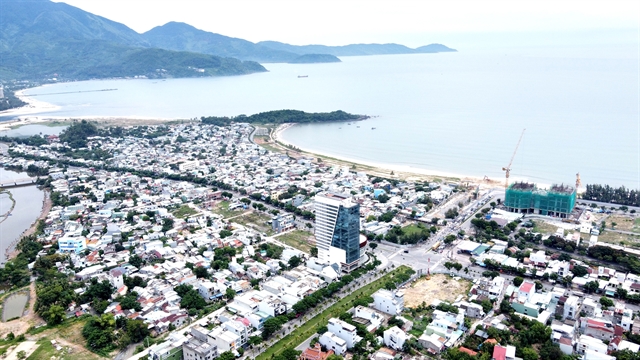 Economy
Economy

 |
| A view of Liên Chiểu District in Đà Nẵng City. — VNA/VNS Photo Quốc Dũng |
ĐÀ NẴNG — The central city of Đà Nẵng is implementing many solutions to stop a decline in foreign direct investment (FDI), striving to attract US$7 billion worth of FDI by 2030.
In the past two months of 2023, Đà Nẵng licensed 16 new foreign-invested projects with a total registered capital of $2.55 million, down 54 per cent in capital over the same period last year, baodautu.vn reported.
The city has to date attracted 965 foreign-invested projects capitalised at over $4 billion. Industry, real estate and services were fields that attracted the lion's share of FDI. Japan is currently the city's largest source of FDI, with over $900 million, followed by Singapore, the US, and South Korea.
According to local authorities, FDI inflow into the city has been on a downward trend. One of the reasons was that due to the COVID-19 pandemic, foreign investors found difficulty in coming to Đà Nẵng to explore investment opportunities, while the tendency to protect domestic production in many countries was increasing.
Another reason was insufficient clean land fund inside and outside the city's industrial zones (IZs) to serve the needs of foreign investors. Most foreign-invested projects are located in IZs, but these zones have reported over 85 per cent land occupancy. Meanwhile, new zones are under construction.
Trần Thị Thanh Tâm, Director of the municipal Department of Planning and Investment, spoke to baodautu.vn that the city would complete and then approve the planning of functional subdivisions under the Adjustments to the Đà Nẵng Master Plan by 2030, with a vision towards 2045.
At the same time, it would complete procedures to organise auctions of land use rights for clean land areas and create conditions for investors to complete investment procedures for the projects they had committed.
In addition, the city would focus on completing infrastructure projects to serve the high-tech industry, information technology and logistics.
It was also accelerating completing and upgrading the technical infrastructure of Hòa Nhơn, Hòa Ninh, the second phase of Hòa Cầm IZs, and Đà Nẵng Supporting Industrial Park. Tâm added that pushing up investment promotion would also be included.
Vice Chairman of the municipal People's Committee Hồ Kỳ Minh said his city was preparing a land fund for industrial development, supporting industries, high technology, and information technology to welcome capital flows into Việt Nam.
Furthermore, it also focused on building high-quality human resources, removing difficulties and obstacles to create the best conditions for businesses to invest in the locality, Minh said.
South Korean firms seek opportunities
Over 100 enterprises from South Korea this month arrived in Đà Nẵng to seek investment opportunities in the city.
Speaking at an investment promotion conference with the participation of these firms, Director of Đà Nẵng Investment Promotion Agency Huỳnh Liên Phương said the city identified Korea as one of the leading strategic partners in investment, trade and tourism cooperation.
Last year, Đà Nẵng welcomed over 385,000 South Korean visitors, accounting for more than 45 per cent of the total number of international visitors to the city and 50 per cent of the total number of Korean visitors to Việt Nam.
Phương said South Korea is one of Đà Nẵng's major import and export markets in Asia. In 2022, the city exported $50 million worth of goods to South Korea, up 12 per cent year-on-year. Its imports from the market hit $78 million, up 4 per cent on-year.
By the end of last year, South Korean investors pumped about $358 million into 256 projects in the city or equivalent to 8.9 per cent of the total foreign investment. That ranked Korea fifth among countries and territories investing in the city.
Shin Kyeonglyun, Deputy Director of KOTRA Đà Nẵng, said many Korean businesses showed interest in the central city thanks to its investment incentives.
She said that Đà Nẵng was moving towards a smart city, attracting many investment projects with many preferential policies. Korean businesses would find many opportunities in the city where local authorities always offered the best support to businesses.
During the seminar, many Korean businesses showed their concern about the city's human resources, as its current population was only 1.2 million. The issues related to securing assets and the support of the city government were also raised by Korean firms.
Phương said that the city's population would reach 1.5 million by 2025. It was expected to increase to 1.8 million by 2030. Currently, about 50 per cent of its population was of working age.
At the same time, the city has more than 20 universities and colleges. The city has regularly connected businesses with universities so that schools can understand the needs of companies so they can provide the right human resources according to the development goals of enterprises.
As a regional economic centre, Đà Nẵng has also attracted a large number of foreign workers, Phương said.
She added that the city's investment environment has improved with fast investment procedures and administrative reform to save business costs, time and effort. — VNS